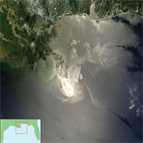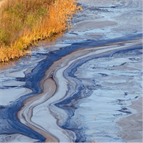Find methods for your needs
Refine by Feature
Displaying 1-2 of 2 results for Tag: Oil spill
Simultaneous Determination of Oil Dispersants in Seawater and Crude Oil by LC and Tandem MS
Instrument Type: LCMSMSOn April 20, 2010 the Deepwater Horizon (MC-252) oil platform caught fire and sank in the Gulf of Mexico, creating a large release of oil and gas from the riser pipe and uncapped well head. Containment efforts included heavy use of oil dispersants Corexit EC9500A and Corexit EC9527A which were approved for use in the Gulf of Mexico oil spill by the U.S. EPA. Tracking Corexit in the environment is a priority due to its low-to-moderate toxicity. We describe an analytical method capable of detecting its presence in seawater even when large dilution factors are expected.
Automated Determination of Gasoline Range Organics (GRO) in Water Via Valve-and-Loop Headspace GC
Instrument Type: GCA Thermo Scientific TRACE 1310 GC-FID coupled to the Thermo Scientific Triplus 300 Headspace Autosampler have been used for the determination of gasoline range organics in water samples. The Gasoline Range Organics (GRO) are markers of possible water contamination due to oil spills and correspond to the range of alkanes from C6 to C10, covering a boiling point range of approximately 60-170°C. According to EPA 5021A, GRO are volatile enough to be effectively removed from environmental samples using an equilibrium headspace procedure.


